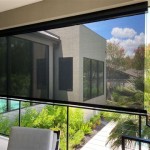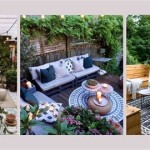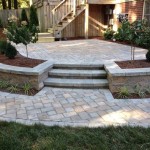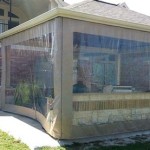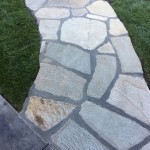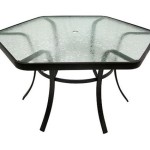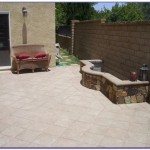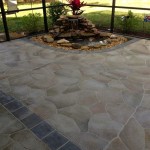Spicing Up Your Patio Door With Fabric Vertical Blinds And Shutters
Patio doors serve as transitional spaces, connecting indoor living areas with the outdoor environment. Their functionality extends beyond mere access; they contribute significantly to a home's aesthetics, natural lighting, and ventilation. However, bare patio doors often present challenges related to privacy, light control, and energy efficiency. Fabric vertical blinds and shutters offer versatile solutions to these challenges, enhancing both the visual appeal and practicality of patio door spaces.
Selecting the appropriate window treatment for a patio door requires careful consideration of several factors. These include the door's size and configuration, the desired level of light control and privacy, the interior design style of the home, and the homeowner's budget. Fabric vertical blinds and shutters both provide distinct advantages, catering to different aesthetic preferences and functional needs.
The Allure of Fabric Vertical Blinds
Fabric vertical blinds consist of individual fabric vanes that hang vertically from a headrail, typically mounted above the patio door. These vanes can be rotated to control the amount of light entering the room or drawn completely to one side for unobstructed access to the patio area. The fabric construction offers a softer and more textured alternative to traditional vinyl or metal vertical blinds, adding a touch of elegance and warmth to the space.
One of the primary benefits of fabric vertical blinds is their versatility in light control. The adjustable vanes allow homeowners to precisely manage the intensity and direction of sunlight, reducing glare and protecting furniture and flooring from harmful UV rays. When fully closed, the blinds provide substantial privacy, shielding the interior from outside view. The ability to partially open the vanes allows for filtered light and ventilation while maintaining a degree of privacy.
Fabric selection plays a crucial role in the overall aesthetic and performance of vertical blinds. A wide range of fabrics is available, including sheer, light-filtering, and blackout options. Sheer fabrics allow diffused light to enter the room, creating a soft and airy ambiance. Light-filtering fabrics reduce glare and provide privacy while still allowing some natural light to pass through. Blackout fabrics completely block out light, making them ideal for bedrooms or media rooms where maximum darkness is desired. The choice of fabric color and pattern can further enhance the room's décor, complementing existing furnishings and creating a cohesive design scheme.
Installation of fabric vertical blinds is generally straightforward, requiring basic tools and minimal expertise. The headrail is typically mounted to the wall above the patio door, and the fabric vanes are then attached to the headrail. Proper installation ensures smooth operation and prevents the blinds from sagging or binding. Regular maintenance, such as dusting or vacuuming the vanes, helps to keep them clean and prevent the buildup of dirt and allergens.
Compared to other window treatment options, fabric vertical blinds offer a cost-effective solution for covering large patio doors. They are generally less expensive than shutters and can provide a similar level of light control and privacy. The wide variety of fabric options allows homeowners to customize the blinds to their specific needs and preferences without exceeding their budget.
The operational mechanism of vertical blinds also contributes to their longevity. With proper care, the headrail and vane carriers can withstand regular use for many years. Replacing individual vanes is also possible should they become damaged or stained, extending the lifespan of the blinds and reducing the need for complete replacement.
The Timeless Elegance of Shutters
Shutters, in contrast to fabric vertical blinds, are solid window coverings consisting of horizontal louvers mounted within a frame. These louvers can be tilted open or closed to control light and privacy. Shutters are typically made from wood, composite materials, or vinyl, offering a durable and long-lasting window treatment option. Patio door shutters are often designed as bi-fold panels, allowing them to fold back against the wall for unobstructed access to the patio area.
The structural integrity of shutters provides enhanced insulation, helping to regulate indoor temperatures and reduce energy consumption. When closed, the shutters create a barrier against heat transfer in the summer and cold drafts in the winter. This can lead to significant savings on heating and cooling costs over time. The tight seal also helps to reduce noise transmission, creating a quieter and more peaceful indoor environment.
Shutters are known for their durability and longevity. High-quality wood or composite shutters can last for decades with proper care, making them a worthwhile investment for homeowners. Their resistance to fading, warping, and cracking ensures that they maintain their appearance and functionality over time. This durability also makes them a practical choice for high-traffic areas or homes with children and pets.
The aesthetic appeal of shutters is undeniable. Their classic design and clean lines complement a wide range of architectural styles, from traditional to contemporary. The louvers can be adjusted to create different levels of light and privacy, adding depth and dimension to the room. The natural wood grain or painted finish of shutters can further enhance the room's décor, creating a sophisticated and polished look.
Customization options for shutters are extensive. Homeowners can choose from a variety of louver sizes, frame styles, and finishes to create a truly unique window treatment. The shutters can be painted or stained to match existing trim and cabinetry, creating a seamless and cohesive design. The ability to customize shutters allows homeowners to tailor them to their specific needs and preferences, ensuring that they perfectly complement their home's décor.
Installation of shutters requires professional expertise to ensure a proper fit and smooth operation. The frame must be precisely aligned and securely attached to the door frame or wall. Improper installation can lead to problems with the shutters' operation and longevity. Professional installers also have the necessary tools and experience to handle any challenges that may arise during the installation process.
While shutters are generally more expensive than fabric vertical blinds, their durability, energy efficiency, and aesthetic appeal make them a worthwhile investment for many homeowners. The long-term value of shutters outweighs their initial cost, as they can increase the value of a home and provide years of reliable performance. The reduced energy consumption and low maintenance requirements further contribute to their overall cost-effectiveness.
Key Considerations When Choosing Between Fabric Vertical Blinds and Shutters
The ultimate decision of whether to use fabric vertical blinds or shutters for patio doors depends on a variety of factors, including budget, desired aesthetic, and functional needs. Fabric vertical blinds offer a more budget-friendly option with a wide range of fabric choices for versatile light control and privacy. Shutters, on the other hand, provide superior durability, energy efficiency, and a timeless aesthetic, albeit at a higher cost.
Maintenance requirements also play a role in the decision-making process. Fabric vertical blinds require regular dusting or vacuuming to keep them clean and prevent the buildup of dirt and allergens. Shutters, while more durable, may require occasional cleaning with a damp cloth. The ease of maintenance should be considered based on the homeowner's lifestyle and preferences.
The architectural style of the home can also influence the choice of window treatment. Shutters tend to complement traditional or colonial-style homes, while fabric vertical blinds can be suitable for more modern or contemporary spaces. However, both options can be adapted to various styles with the right choice of materials and finishes.
Consider the level of privacy required. While both options offer privacy, shutters, when closed, provide a tighter seal and greater obscurity. If complete privacy is a primary concern, shutters may be the preferred choice. If filtered light and partial privacy are sufficient, fabric vertical blinds may be adequate.
Energy efficiency considerations are relevant as well. Shutters, due to their solid construction, offer better insulation and can help to reduce energy costs. If energy efficiency is a top priority, shutters may be the more effective option. However, certain types of fabric vertical blinds, such as those with thermal linings, can also provide a degree of insulation.
Ultimately, evaluating these factors in relation to individual needs and preferences will guide the selection process, ensuring that the chosen window treatment enhances the beauty, functionality, and comfort of the patio door space and the home as a whole. Consulting with a window treatment professional can provide valuable insights and help to navigate the various options available.

How To Choose The Best Blinds For Patio Doors

Understand The Pros Cons Of Built In Blinds For Sliding Patio Doors

Bali Sliding Panel Track Blinds Elegant Window Covering Solution

Vertical Blinds In Philadelphia Allure Window Treatments

Patio Door Vertical Honeycomb Shades

Understand The Pros Cons Of Built In Blinds For Sliding Patio Doors

The Best Blinds For Patio Doors Hillarys

Window Treatments For Doors At 3 Blind Mice La Jolla Ca Patch

How To Choose The Best Blinds For Patio Doors

The 10 Types Of Window Shades Blinds To Add Perfect Finishing Touch
Related Posts

